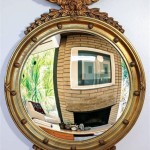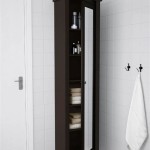Side Mirror Rules: A Comprehensive Guide
Side mirrors play a critical role in safe driving, providing an expanded view of the areas beside and slightly behind a vehicle. Understanding the rules and best practices associated with side mirror adjustment and usage is crucial for all drivers.
Regulations regarding side mirrors vary by jurisdiction. Most regions mandate at least one side mirror, typically on the driver's side. Many jurisdictions require two side mirrors, one on each side of the vehicle. Drivers should consult their local laws to ensure compliance. This information is readily available through the Department of Motor Vehicles (DMV) or equivalent licensing agency.
Beyond the legal requirements, proper adjustment significantly enhances road safety. Incorrectly positioned mirrors can create blind spots, areas not visible to the driver through either the windshield or mirrors. These blind spots can obscure other vehicles, pedestrians, or cyclists, increasing the risk of collisions, especially during lane changes or merges.
Historically, the traditional method of adjusting side mirrors involved positioning them to show a portion of the vehicle's side. This method, however, often resulted in significant overlap between the rearview mirror's field of vision and the side mirrors', effectively duplicating the view and widening the blind spots.
The Society of Automotive Engineers (SAE) recommends a different approach, often referred to as the "blind spot method" or "enhanced mirror setting." This technique aims to minimize blind spots by angling the side mirrors outwards more than the traditional setting. This positioning reduces overlap with the rearview mirror and provides a wider view of the adjacent lanes.
To implement the SAE-recommended method, begin by adjusting the driver's side mirror. The driver should lean their head against the left-side window and adjust the mirror until the left rear corner of the vehicle is just visible. Then, while sitting in a normal driving position, the driver should only be able to see the adjacent lane, not the side of their own vehicle.
For the passenger-side mirror, the driver should lean towards the center of the vehicle and adjust the mirror until the right rear corner of the vehicle is just visible. Returning to the normal driving position, the driver should primarily see the adjacent lane in the passenger-side mirror, with minimal or no view of their own vehicle.
While this method effectively reduces blind spots, it does require a conscious shift in how drivers use their mirrors. It might initially feel unusual to not see the side of the vehicle in the side mirrors. However, the enhanced view of adjacent lanes offers a significant safety advantage. It allows earlier detection of vehicles approaching from the rear, providing more time to react and avoid potential collisions.
Regular checks and adjustments are essential to maintain correct mirror positioning. Factors like vehicle loading, passenger seating, and even minor bumps in the road can shift the mirror alignment. Therefore, drivers should develop a habit of verifying and adjusting their mirrors before each trip.
In addition to proper adjustment, effective use of side mirrors requires consistent scanning. Drivers should frequently check their mirrors, not just when changing lanes or merging. Regular glancing at the mirrors helps maintain awareness of the surrounding traffic and allows for anticipating potential hazards. This is especially important in heavy traffic, complex intersections, and challenging driving conditions.
While side mirrors provide a valuable tool for enhancing visibility, they do have limitations. The convex shape of many side mirrors can distort the distance and speed of approaching vehicles. Objects may appear farther away and moving slower than they actually are. This distortion emphasizes the importance of using side mirrors in conjunction with the rearview mirror and, importantly, physically turning one's head to check blind spots before making any lane changes or maneuvers.
Furthermore, the area directly behind the vehicle remains a blind spot even with optimally adjusted side mirrors. This area, often referred to as the "no-zone," is particularly critical for larger vehicles like trucks and buses. Drivers should exercise extreme caution when operating near these vehicles and be aware of their limited visibility.
Technological advancements are continuously improving driver assistance systems. Features like Blind Spot Monitoring (BSM) systems utilize sensors to detect vehicles in blind spots and provide alerts to the driver. Lane Change Assist (LCA) systems can even intervene with steering or braking to prevent collisions during lane changes. While these systems offer added safety, they are not a substitute for proper mirror adjustment and vigilant observation.
Understanding and adhering to side mirror rules and best practices are vital for safe driving. Proper mirror adjustment, consistent scanning, and awareness of the limitations of mirrors significantly contribute to reducing the risk of accidents. By incorporating these practices into their driving habits, drivers can create a safer environment for themselves and others on the road.

11 How To Properly Adjust Side Mirrors Driving Basics Tips Safe

Side View Mirror Wikipedia

This Is How You Adjust And Use Your Mirrors Properly To Have Clear Visibility Driving Academy Tests Org

Mirror Laws

Adjust Your Car Mirrors For Maximum Visibility And Safety Glass Doctor

Is It Illegal To Drive Without A Wing Mirror Go Girl
Side Mirror Laws Is It Illegal To Drive Without Mirrors Micmirror

How To Use Your Mirrors When Reversing Car Parks And On The Road

Illinois Mirror Laws

How To Judge When Change Lanes Using The Mirrors Blind Spots Also








